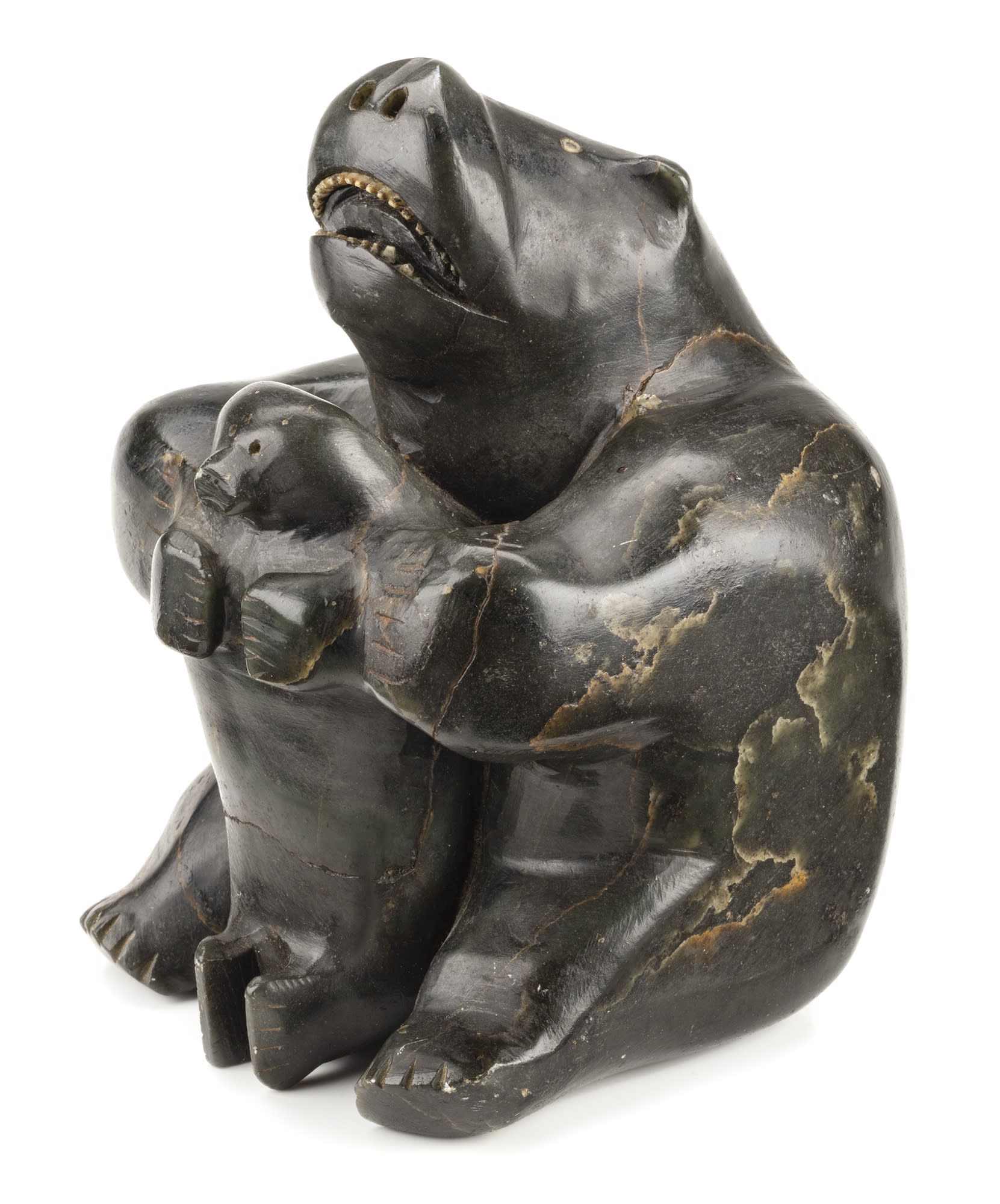Origins of a Place: A Brief Historical Context of Inukjuak
The story of Inujuak begins, as so many stories do, with a giant.
It is a story that explains place. How things got their names, their shapes, their meanings, long before outsiders arrived with their own maps and missionary zeal.
A fearsome being is said to have terrorized the Inuit of eastern Hudson Bay. The giant was felled not by brute force but by a clever hunter that the giant held captive. As the story goes, the exhausted giant stopped to rest, lulled into sleep by fatigue and familiarity. That moment of pause allowed the hunter to escape. The story does not end there. Grief-stricken and furious, the giant’s wife gave chase. In her rage, she struck a great boulder with such force that it split open, unleashing a stream of water that became a river, one that still flows to this day.
European contact arrived with Révillon Frères, a Paris-based fur trading firm, who established a post in 1909. The Hudson’s Bay Company followed, and the two companies engaged in a fur-fueled rivalry that shaped much of the region’s early colonial economy. Unsurprisingly, missionaries soon followed, bringing religion, English, and new forms of schooling. As children were moved from camps into settlements, families gradually shifted from land-based lifeways to dependence on centralized services, medicine, education, and trade among them.
Arrival of James Houston and the Development of the Carving Economy
And then came the now-famous arrival of James Houston.
In 1948, the artist and writer travelled to Inukjuak and purchased a small Inuit carving, which he later brought south. This seemingly modest exchange would go on to shape the future of Inuit art in profound ways.
The following year, 1949, is now considered the beginning of the contemporary period of Inuit art, as it marked the onset of ongoing production and export of carvings to southern markets. Houston returned to Inukjuak that year to acquire additional works for an historic sales exhibition at the Canadian Guild of Crafts in Montreal. Backed by The Guild and later supported by federal cultural initiatives, Houston’s efforts helped introduce Inuit sculpture to southern audiences, where it was quickly met with admiration and commercial demand.
What began as a moment of cross-cultural curiosity soon became a government-sponsored effort to formalize and promote Inuit carving as both economic development and national art form. For the people of Inukjuak, it marked a turning point, a shift from subsistence-based carving to market driven production, and the beginning of a new relationship between Inuit makers and the outside world.
The works that emerged from Inukjuak at this time are deeply rooted in this moment of transition. They reflect a community adapting to radical change: permanent settlement, schooling, shifting economies. Yet carving remained an act of agency. Artists found in stone a means to shape their own future.
The Stone: Raw Material, Refined Vision
The stone for the works produced in these early days was unlike that found elsewhere in the Arctic. Dense, dark, and often beautifully veined with an almost gold like tint, it lent itself to fine detail and a high polish.
For early carvers, the stone was both collaborator and obstacle. It was beautiful but stubborn, and demanded not just muscle but memory: a practiced sense of where to press, where to pause, and where the grain or inclusions might betray you. And yet, when handled with care and conviction, it yielded something remarkable.
These works were often accented with contrasting materials such as ivory, bone, soap, or even plastic to highlight facial features, inlay eyes, or emphasize fine, decorative details.
In the early years of production access to carving stone does not appear to have been a serious concern. James Houston later recalled that people broke off chunks of dark green serpentine along the banks of the Inukjuak River [1]. “There was lots of stone on that coast,” he wrote, “and it would all oil and polish beautifully” [2].
However, by the early 1960s, the availability of carving stone had already begun to emerge as a concern among carvers in Nunavik. References to material shortages appear in the minutes of the Arctic cooperative conferences of 1963 and 1966, and by 1977, the challenge of securing adequate raw stone was considered a major problem by many working artists [3].
Two works in this sale , Lots 34 and 5, offer striking examples of how artists from Inukjuak harnessed the potential of this local stone. In each, you can see not just what the material allowed but what it inspired.

Lot 34
ELIJASSIAPIK (1912-1972) INUKJUAK (PORT HARRISON)
Seated Mother and Child with Platter, c. 1953-55
20,000 — 30,000
Lot 34 and our cover, Elijassiapik’s Seated Mother and Child with Platter is a masterwork in every sense. Carved from the richly veined stone, it is, at once, intimate and expansive. The rounded hood, the mother’s serene face, the child peeking up are all rendered with such tenderness that the work feels both archetypal and achingly personal.

Lot 5
UNIDENTIFIED ARTIST, INUKJUAK (PORT HARRISON)
Bear with Captured Seal, c. early to mid 1950s
4,000 — 6,000
Lot 5, the delightful Bear with Captured Seal, with its startlingly fine teeth and oddly tender pose. It is both humorous and precise, a work that captures the tonal complexity of early Inukjuak carving. While the identity of the carver is unknown, its charm and craftsmanship speak volumes about the confidence and creativity of the artists working in this period.
¹ James Houston, as cited in Marybelle Mitchell, “Making Art in Nunavik: A Brief Historical Overview,” Inuit Art Quarterly, vol. 13, no. 3 (Fall): pp.4-17
² Ibid.
